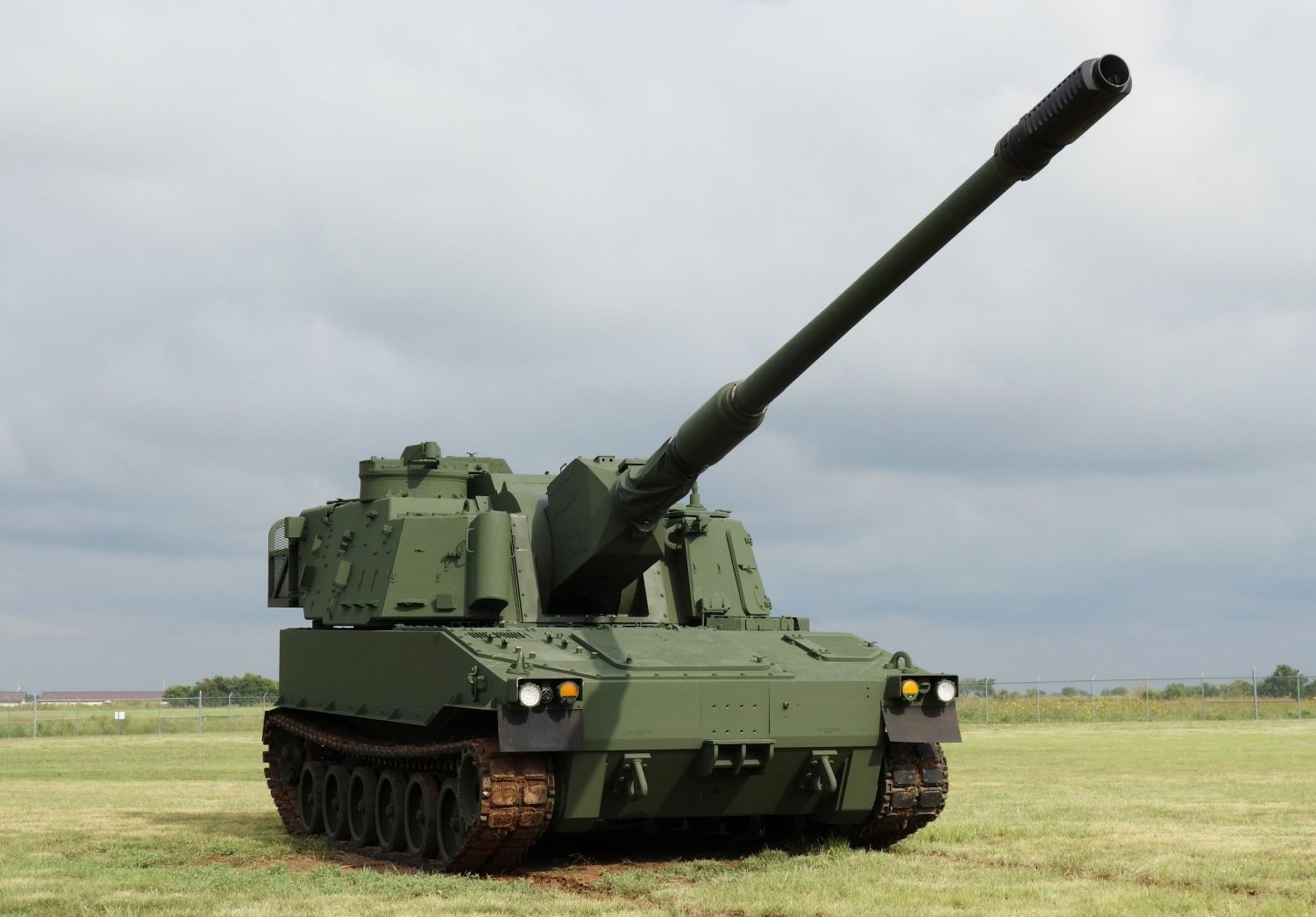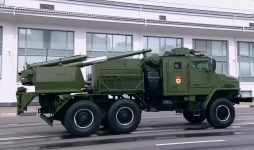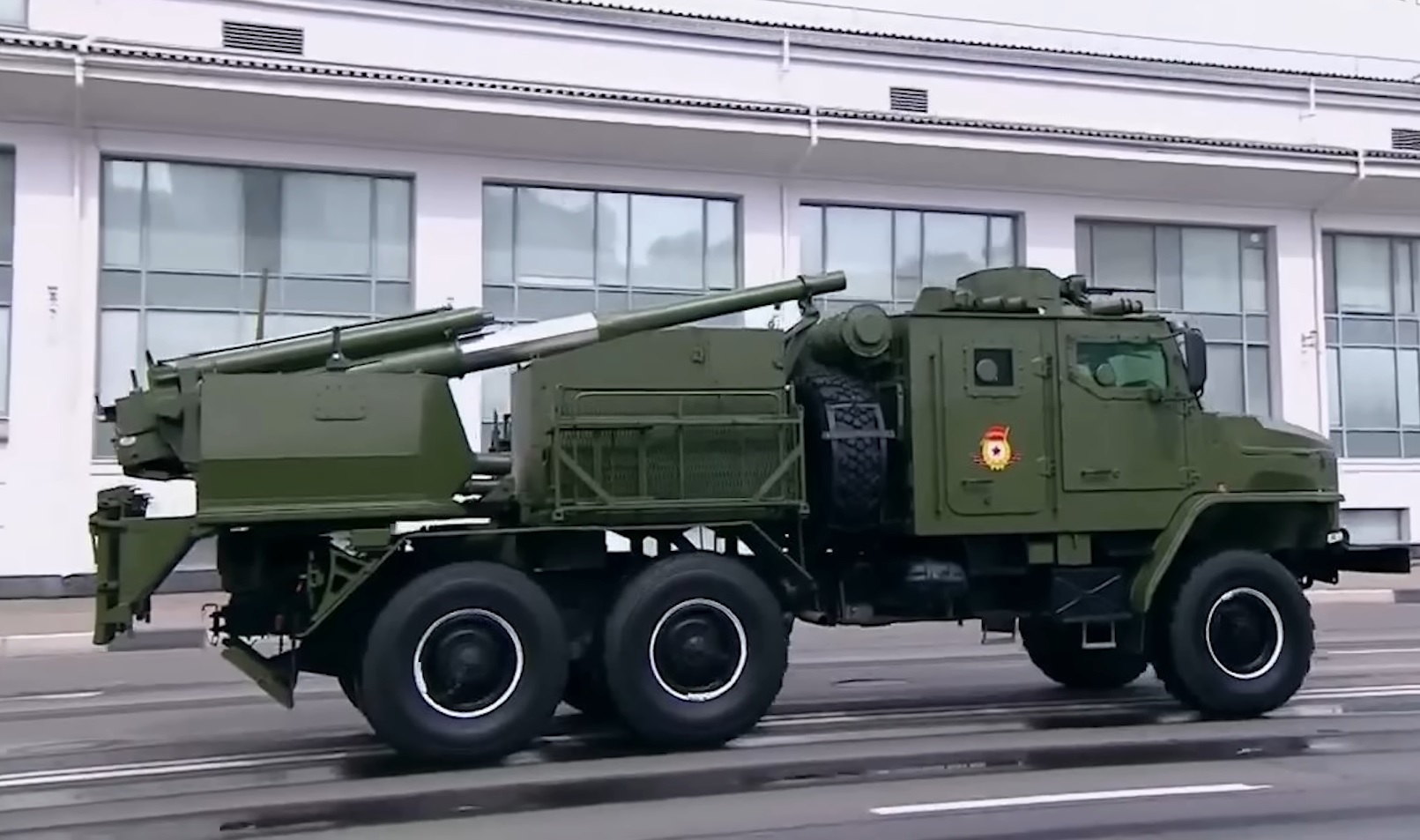Russia Hits Immobile And Predictable M-777, AHS Krab, And M-109 Howitzers Hard
Craig Hooper
May 14, 2023,10:15am EDT
Privacy Policy – Privacy & Terms – Google
To date, Ukraine has received at least 390 pieces of towed artillery and 440 self-propelled guns. NATO’s “big guns” have performed well in Ukrainian hands, but they are suffering heavy losses to Russian action. As imagery of successful attacks on Western gear accumulates, they suggest that
Ukraine must keep their artillery pieces on the move, avoiding predictable patterns of operation.
Open-source data compiled by the indefatigable researchers behind the
Oryx website suggest that Ukraine’s heaviest towed artillery—
guns that cannot move themselves and are heavy enough to be an occasional mobility challenge—are getting hit. Ukraine’s loss rates are brutal.
Of the approximately 152 big M777 155mm towed howitzers that “officially” arrived in Ukraine,
over a third have already been damaged or destroyed.
Imagery of Russian strikes on the NATO-standard 155-mm howitzers show signs that the
successfully targeted guns had become static battlefield assets—firing from positions heaped with piles of shells or blasting away from longstanding battlefield emplacements. Detritus around many of the hit guns suggest they had been firing from a single position long enough for Russia’s ponderous command-and-control apparatus to swing into action, ambushing Ukraine’s big guns.
But mobility isn’t the only answer. Russia is also hitting old-school self-propelled artillery systems—guns that can move about under their own power.
Both the AHS Krab, a Polish-designed South Korean and British hybrid gun system,
and America’s functional equivalent, the hard-working
M-109 mobile howitzer,
are getting hit rather hard, with loss rates ranging somewhere between eighteen to twenty-one percent. With
over 180 delivered, at least 36 have been damaged or destroyed.
Again, imagery of successful Russian strikes suggests
roughly half the destroyed mobile howitzers were caught in static firing points or had set into a pattern, operating from detectable positions.
In contrast,
smaller and more mobile artillery platforms don’t seem to be getting hit much at all.
Smaller, More Mobile Platforms Are Staying Alive:
While vulnerable, the small, easy-to-move M119 105mm guns seem to be staying alive
Thus far,
at least 166 105mm towed artillery pieces have arrived in Ukraine. Of the array of British L118/119s, U.S.-built M101s and M119s, along with some OTO Melara Mod 56 105mm howitzers, open-source researchers have only confirmed damage to a single 105mm gun.
This lower loss rate may reflect the smaller platform’s relative mobility as well as their proximity to the front line.
The 105mm guns are, in general, no more than half the weight of a 155mm M777. While the 105mm shells are smaller and pack far less of a punch than the longer-ranged 155mm projectiles, the little guns
operate close to the front line, where defenses and jammers may make life a little harder for Russia’s fleet of artillery-hunting drones. Changing
tactical circumstances can also force the guns to move about the battlefield. Conversely, 105mm gun crews,
operating 10 miles from their targets, know they can be targeted by a wide array of Russian ordnance, so they may be incentivized to reflexively shoot-and-scoot.
The French-built truck-mounted
CAESAR 155mm gun has also done well in Ukraine.
About 49 of these fast-moving, mobile guns are in Ukrainian service. And while the howitzers have been intensively used, they seem hard for Russia to catch. Open-source researchers have
reported only two hits.
Again, crew staffing these relatively un-armored gun carriages are
incentivized to shoot-and-scoot. And,
unlike Ukraine’s tracked self-propelled artillery, the wheeled howitzer—while it may not be as “mobile” as a tracked vehicle—
is far harder for Russian analysts to track down.
The German Panzerhaubitze
(PzH) 2000 155mm self-propelled gun
also seems to be avoiding harm. While the gun—the longest-range howitzer yet provided Ukraine—has suffered
reliability problems and been forced to occasionally leave the battlefield for repairs, it has also been subject to high use-rates. Despite all the intensive use, only
one of the 20 cannons has reportedly been damaged by Russian action. Again, this low loss rate may reflect the high-profile and specialized nature of the these platforms—making Ukraine focus on minimizing the risk to these hard-hitting, long-range platforms.
Mobility Is Life:
Of course, open-source data is not the whole story. But the visual data available to date offers some compelling hints as to why Ukraine is losing some artillery platforms more than others.
Given Ukraine’s massive losses of heavy towed 155mm guns, future Ukraine aid should focus on ensuring Ukraine retains sufficient mobility assets and enough fresh gun crews to keep their precious 155mm howitzers moving around the battlefield. If open-source data reflects a real trend, understanding the difference in loss-rates between the smaller 105mm gun and the big howitzers is important. Foreign observers can help Ukraine identify operational vulnerabilities faster, steering operators away from highly-used ammunition, refueling and firing positions before Russia has an opportunity to capitalize on Ukraine’s mistakes.
With Ukraine challenged to hide tracked 155-mm self-propelled guns in the muddy Ukrainian fields, it might be worth comparing how the Ukraine army treats their fleet of workmanlike KRAB and M-109 guns versus how the Army operates their precious PzH-2000s.
The loss rates may also reflect the challenge of adopting to a NATO-standard arsenal. While KRABs, M-109s and M777 howitzers look a lot like their old-school, Soviet-era analogues, they are very different animals, and need to be operated in different ways. New habits may come easier to those operators who are forced to operate platforms that have no simple Russian analogue.
Mobility, of course, isn’t the only answer. Going forward, fancy technology and other efforts to block and jam Russia’s array of reconnaissance attack-drones will be critical. But the basics matter. The pattens seem clear:
The more Ukraine’s high-value gear moves—and the more it moves in unpredictable patterns—the harder it is for Russia to hit them.







